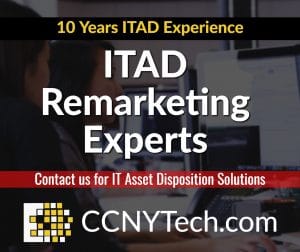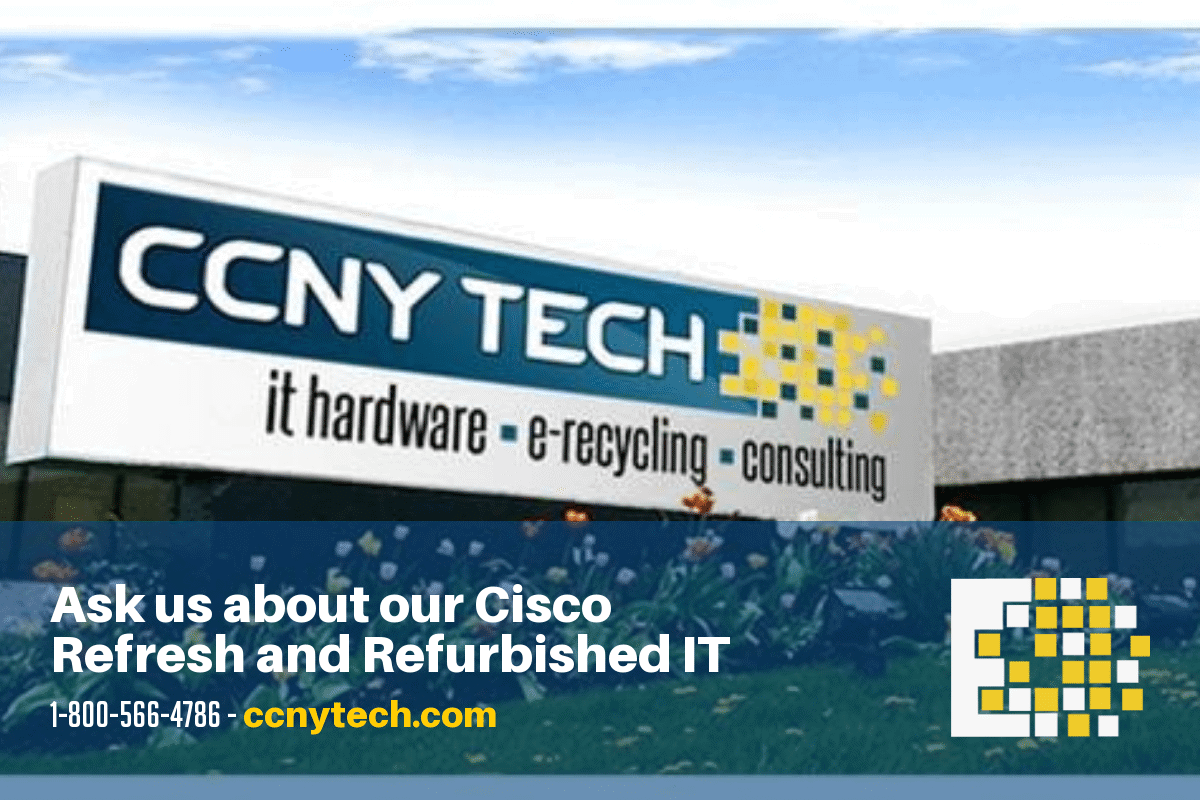Last year, the average cost of a data breach was $3.62 million, according to Ponemon Institute. Many companies often focus on potential fines, however, the largest financial impact comes from the cost of cleaning up after a data breach and the loss of customer confidence.
According to a recent report published by MarketsandMarkets.com: The Global ITAD market was valued at USD 10.12 Billion in 2015 and is expected to reach USD 20.09 Billion by 2022. The evolution of technologies such as cloud computing, Big Data analytics, Internet of Things (IoT), and the changing landscape of Information Technology has contributed to the increase in e-waste processing. IT Asset Disposition (ITAD) is being adopted by many companies to minimize the environmental impact as well as the risk of data theft by following government standards and environmental regulations.
 The Growth of Remarketing Services
The Growth of Remarketing Services
IT asset remarketing service is a revenue-sharing program that is designed to obtain maximum returns. The services help the service providers to determine the asset recovery strategy that is most closely aligned with the clients’ business objectives.
It is a double-edged sword for businesses that fail to act properly today. There are legal ramifications of not being proper stewards of data. These can be costly or nearly fatal to a business in the privacy-conscious world we are living in.
Environmental concerns are real as well and must be respected to avoid massive fines. For many years, companies would attempt to remove equipment and resell it on auction sites or give the hardware away to employees. Some unknowingly would improperly add it to the waste stream as e-waste. This has become a worldwide health concern and can cause irreversible environmental damage.
Data Destruction
One of the things to consider is, should data be destroyed at your own site, or is it OK to do it at the ITAD provider’s site? If you are shipping equipment, what level of logistics services do you need?
Three considerations include:
- Do you require asset scanning to enable full asset tracking?
- Do you need drives destroyed to DOD Standards?
- Should vehicles be dedicated or shared?
 Then there’s the question of which data destruction method to use. Various data destruction methods have varying levels of security and cost. Options include:
Then there’s the question of which data destruction method to use. Various data destruction methods have varying levels of security and cost. Options include:
- A single-pass or multiple-pass data wipe: drives can be reused and provide a residual value return
- Degaussing: no ability to resell the drive and no visual indicator that it has worked, but a cheaper alternative to shredding when performed at customer sites
- Crushing/drilling/pinning: low-cost options that show physical evidence that they have been performed. However, these methods destroy the residual value of the unit and the data is still present on the platters despite their not being able to spin up
- On-site shredding: the most secure form of data destruction, but it is expensive and destroys any residual value
What’s important to understand is that one size does not fit all when it comes to IT disposal. What suits one company may not suit another, and there is a good chance that different business will have different needs regardless of industry or sector.
Some say that physically destroying hard drives at your own site is always the best option. For very highly sensitive data, it may be. But this isn’t always the case. On-site shredding guarantees security only if you watch every single hard drive go into the shredder yourself. And there are other pitfalls.
Since it can be expensive to shred hard drives at customer sites, companies often stockpile large numbers of drives to be shredded at once to cut cost. However, the longer you keep data around, the more chance there is of something getting lost or someone stealing it. It’s likely safer to choose an alternative data destruction method if it reduces the time the data remains on the drives.
The key to getting disposal right is to engage it in a professional and sophisticated manner. Your security team will always want the most secure option; your procurement team will always want the cheapest option that can generate the maximum residual value returns; your project management/service management team will want the most practical solution to deliver the most seamless end-user experience possible; and your ITAD provider will have their own methods that work best from their experience. The hardest part is balancing the different needs.
CCNY Tech is a Market Leader in ITAD
 CCNY Tech has found that perfect balance of security and value recovery. We have created a stress-free way to transfer equipment out of your facility (leaving more room for your main IT functions) and recover value quickly and effectively.
CCNY Tech has found that perfect balance of security and value recovery. We have created a stress-free way to transfer equipment out of your facility (leaving more room for your main IT functions) and recover value quickly and effectively.
Our ITAD team has more than 10 years of experience handling enterprise hardware and all work is done professionally by our internal staff.
We promise to act quickly on your behalf to make sure that the least impact of depreciation affects your hardware. Our partnership program will allow us to expedite the remarketing process and recover the most value back to your organization.
CCNY Tech has a worldwide network of buyers and logistics to make this stress-free process. Our facility is equipt to handle the largest IT Asset Disposition clients and we continue to perfect the process.





 Article Author:
Article Author: